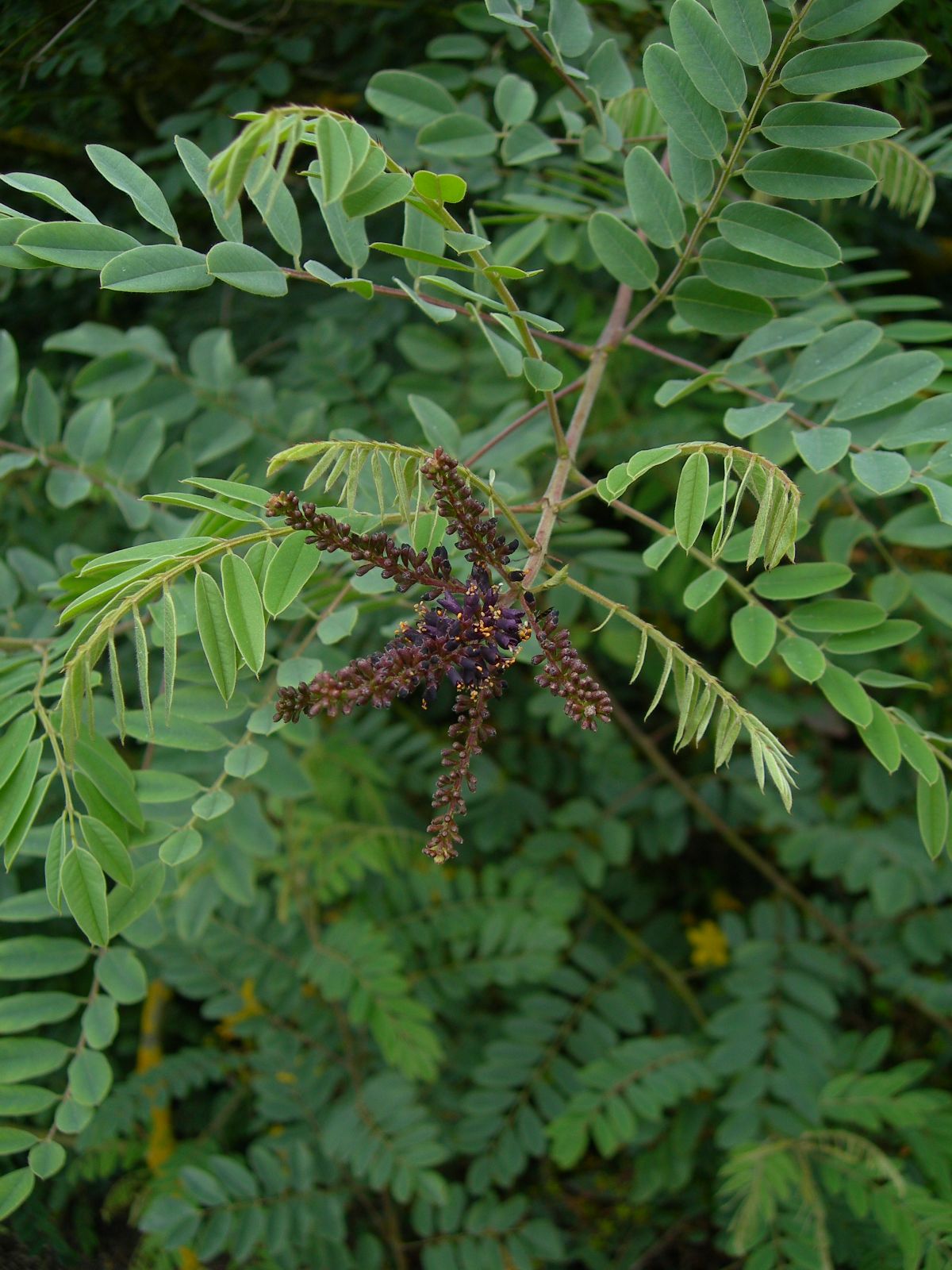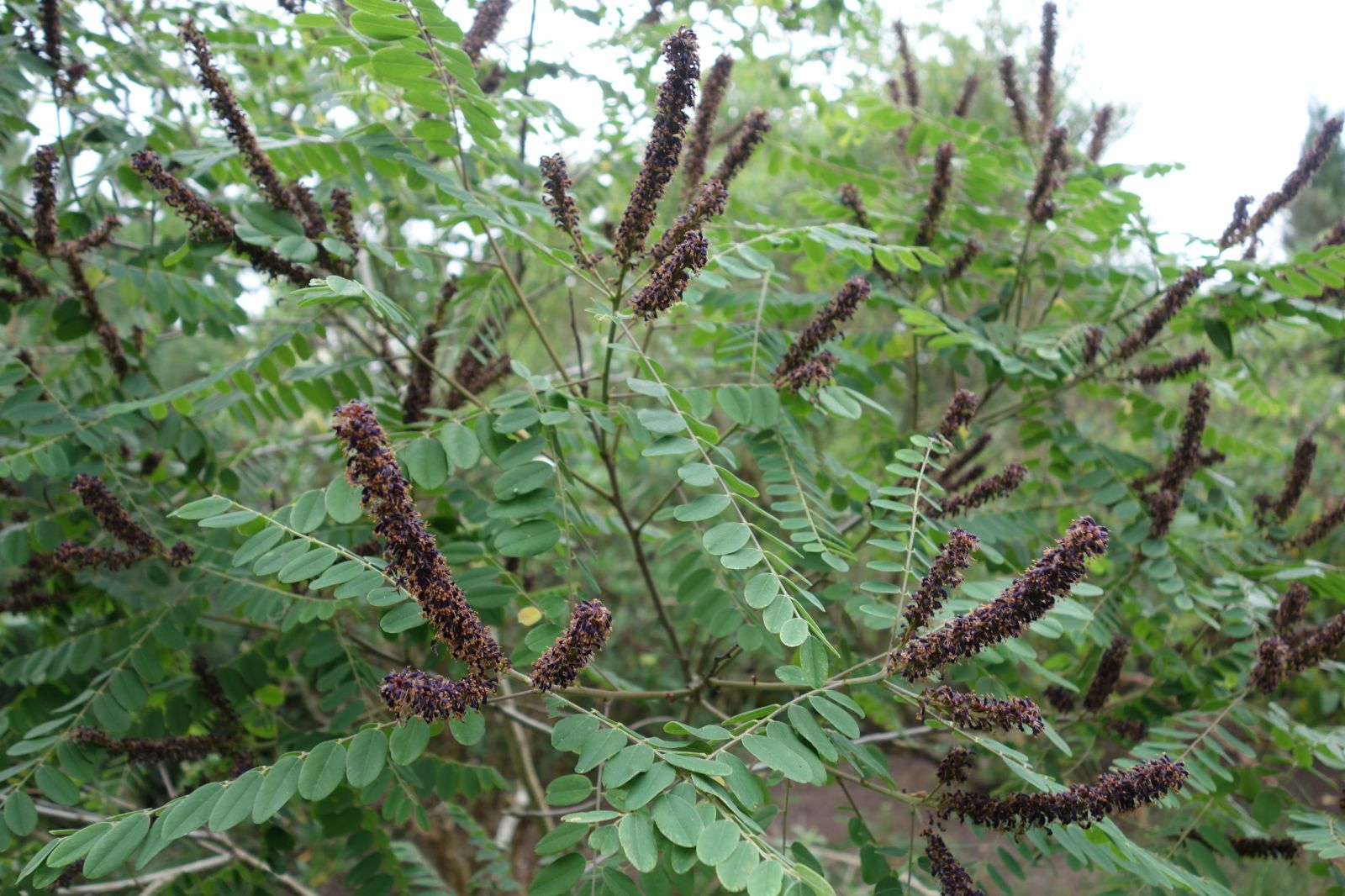Amorpha fruticosa
Credits
Article from Bean's Trees and Shrubs Hardy in the British Isles
Recommended citation
'Amorpha fruticosa' from the website Trees and Shrubs Online (treesandshrubsonline.
Genus
Common Names
- False Indigo
A deciduous shrub 6 to 15 ft high, of spreading, rather ungainly habit, branches slightly grooved, either slightly downy or glabrous. Leaves pinnate, glabrous or somewhat downy, with thirteen to thirty-three leaflets, which are oval or oblong, ending in a bristle-like apex, and varying in length from 1 to 2 in.; there is a short, thread-like stipel at the base of each leaflet, and numerous transparent dots are scattered over the blade. Racemes slender, cylindrical, 4 to 6 in. long, more or less downy, or almost glabrous, produced at the end of the shoots of the year, and from the axils of the terminal leaves. Flowers 1⁄3 in. long, densely packed, purplish blue, with yellow anthers. Pod 1⁄3 in. long, very warty, one- or two-seeded. Bot. Mag., n.s., t.604.
Native of the southern United States; introduced to England in 1724, by, it is said, Mark Catesby, the author of the Natural History of Carolina. It exhibits under cultivation a certain amount of variation in the shape and size of the leaflets, in the number to each leaf, and especially in the degree of pubescence on various parts of the plant. This shrub flowers in July, when its slender racemes give a pretty effect; the foliage also is ornamental; yet it belongs to an inferior class of shrubs, and is perhaps best suited for rough shrubberies where it may be left to take care of itself. At Kew, in open ground, the shoots die back nearly their entire length, and they have to be pruned over every spring. It is a variable species and numerous natural and garden variants have been distinguished but are of no horticultural importance today. A. glabra Poir., an allied but more glabrous species, was in commerce early in the nineteenth century and is no doubt still to be seen in botanical collections.


